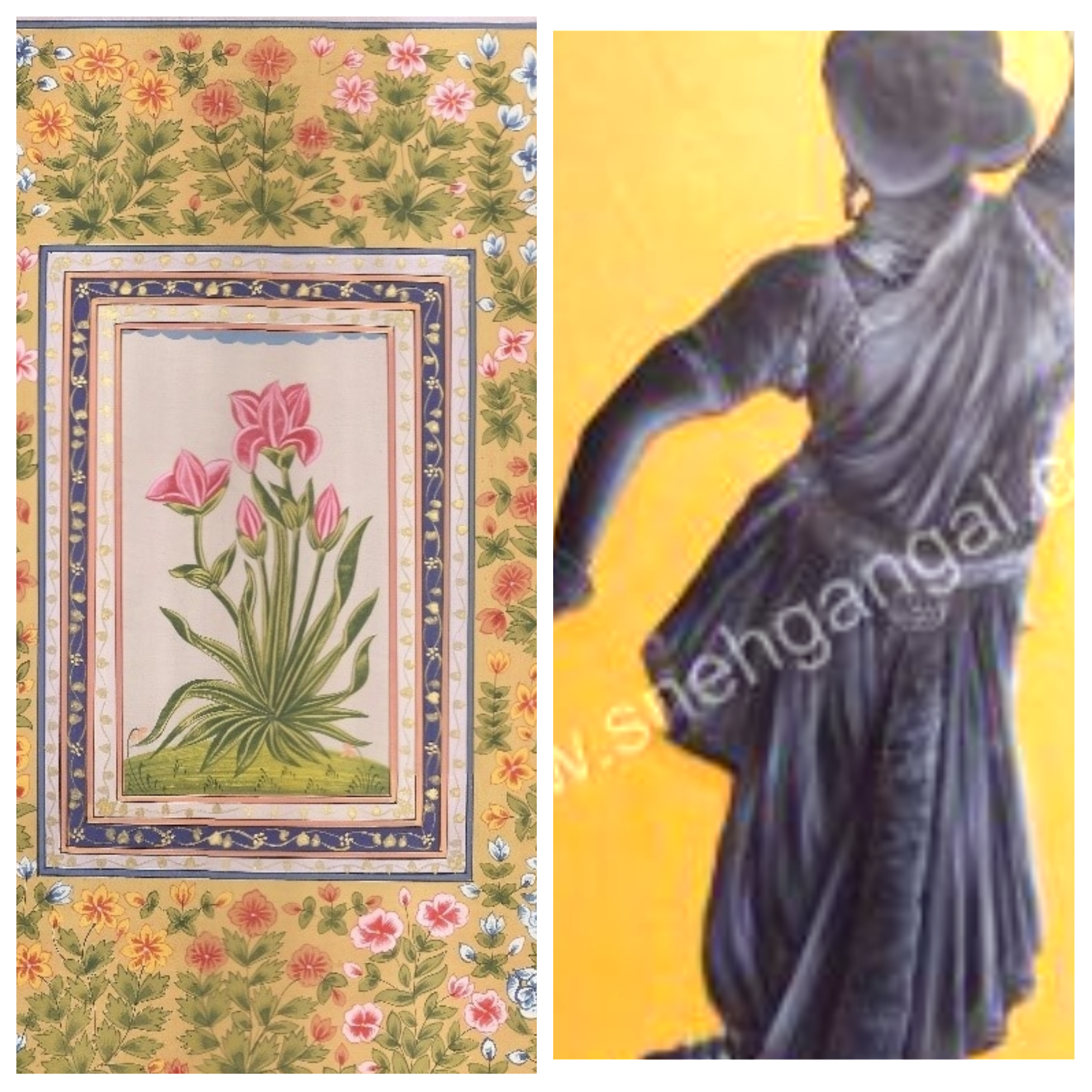Indian painting shares a long tradition of art. We can trace the earliest Indian paintings back to rock paintings from pre-historic times.
In this blog, we will discuss how miniature painting differs from the mural.
The Mughal painting style developed because of the happy confluence of the Indian style of painting and the school of Persian painting. The Mughal Style’s most distinguishing feature is the detailing. Mughal painting is a product of naturalism, i.e., close observation of nature.
The Mughal painting developed with years and was further influenced by European paintings that entered the Mughal Court and the culture witnessed the rise of Western techniques like shading and perspective.
Classification of Indian Paintings
So, this is how the Mughal painting style marked its existence in the painting world. There are three broad types of Indian paintings: murals, miniatures, and cloth paintings.
Mural Vs. Miniature Painting
The Word “Mural” is derived from the Latin word “Murus” which means wall. Thus, Mural Painting can be defined as any piece of work applied directly onto the wall. Usually found in museums, libraries, churches, and the homes of rich patrons of art, this type of painting are quite rare. Specifically, the painting is created on fired tiles.
Mural Painting
The history of Indian Murals starts in early medieval times, from the 2nd century BC to the 10th century BC. Murals from this period have been found in over 20 locations, mainly in caves and rock-cut chambers. These paintings mainly depict the themes of Buddhist, Jain, and Hindu religions.
How architectural space is emphasized and incorporated into the picture defines the aesthetics of mural paintings.
Mural paintings depict a particular era. It encapsulates moments and covers activities like hunting, family life, religious and funeral rituals. The artwork depicts the expression of those times through hard postures.
The mural paintings can be found in the caves of Ajanta, Armamalai Cave (Tamil Nadu), Ravan Chhaya rock shelter, Kailasanatha temple in Ellora Caves.
Miniature Painting
Miniature painting is a painting in fine details executed on Vellum, ivory, and copper card. Miniature painting derived its name from “Minium” or red lead used by medieval illuminators. The amalgamation of illuminated manuscripts and medals carved the existence of miniature paintings. The miniature painting flourished from the 16th century to the mid-19th century.
One of the most intricate features of miniature painting is that we derive the colors from edible sources like vegetables, indigo, gold, and silver.
While original artists presented their perspectives in their painting, the theme of miniature painting was Ragas, patterns in musical notes, religious and mythological stories. The difference between this and mural painting is that we create it in natural colors, rather than on a wall. The art of Mughal painting in India reached a zenith in the Mughal Period. You can still witness the influence of miniature painting in Rajasthani art, the Rajasthani school of painting, including Mewar, Marwar, Kishangarh, and Bundi.
Monks share a commendable contribution to the work of miniature art. Some ancient manuscripts contain miniature paintings that depict a beautiful arrangement of life-size flowers and delicately defined borders.
Monks share a commendable contribution to the work of miniature art. Some ancient manuscripts contain miniature paintings that depict a beautiful arrangement of life-size flowers and delicately defined borders.
Miniature painting began out of necessity for illustrating documents before printing was invented. Eventually, portrait artists began creating miniature-sized portraits for use as wallet photographs and tools for carrying around. MINIATURE is often mistaken for “small”; it has nothing to do with it. A miniature painting is one that is created in miniature. It is a detailed work of art.
This is all about miniature painting.
To conclude, Murals are extensive works executed on walls like Ajanta caves, while Miniature paintings are executed on a small scale mainly for books and albums on perishable material like paper, cloth, etc.
Mughal miniature paintings in this way characterize Indian art and culture and are continuously developing.


